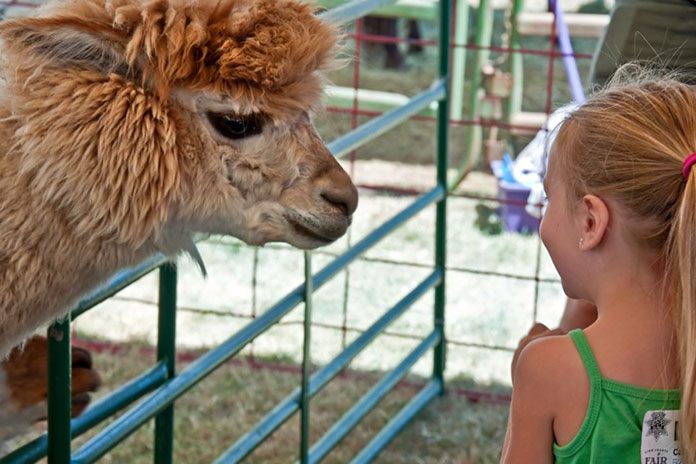
For the balance of the summer, Oregon’s county fair season will bring together people, animals, and food– a combination that is supposed to lead to a good time, free of worries about pathogens that could lead to illness.
“We want happy people at our county fairs, not sick people,” says State Veterinarian Brad LeaMaster of the Oregon Department of Agriculture.
ODA’s Food Safety and Animal Health programs are providing unified messages for exhibitors, food vendors, and, especially, fair goers this summer– common sense tips that promote a healthy and satisfying experience.
Over the next several weeks, numerous shows, exhibitions, and competitions involving livestock will attract people and animals throughout Oregon. The county fair season kicked off last week in Marion County– Multnomah County held its fair in May– and fairs open this week in Jackson and Linn counties. Several more will follow in July and August culminating with the State Fair in Salem August 25-September 4. With these events comes a renewed effort to guard against infectious diseases.
“On the animal health side, we’ve been educating and reminding everyone the importance of biosecurity,” says LeaMaster. “Exhibitors know this very well, but sometimes the general public forgets.”
Precautions are taken to ensure only healthy animals come to the fair. All animals receive a veterinary inspection as they arrive. Advice to livestock owners includes being observant well before the fair begins. Any animals showing signs of not feeling well need to be checked by a vet. Nobody wants to be the one that brings an animal disease to the fair.
Biosecurity has become an important buzzword in preventing the spread of animal disease. It’s a common sense approach to minimizing risk, with a major focus on sanitation.
“FFA and 4-H kids that look after these animals know the points of biosecurity very well,” says LeaMaster. “Very rarely do they share equipment, certain animals are kept a certain distance, exhibitors wear clothing that can be scrubbed and cleaned, and you see them using disinfectants. You will also see them washing their hands a lot.”
The common sense action of handwashing applies to the general public, especially if they are going to be around the animals at the fair.
“Wash your hands when you go in to see the animals, wash your hands when you go out,” advises LeaMaster. “Use those handwashing stations. That really helps lower the risk of moving any potential pathogens around.”
Two common pathogens of concern at fairs and other events involving animals are salmonella and E. coli. Both, to some extent, are normally present in these environments. They can become a problem for people when cross-contamination occurs. E. coli 0157caused dozens of illnesses at the Lane County Fair in 2002.
Other animal diseases on the radar include avian influenza and exotic newcastle disease in poultry, Equine Herpes Virus (EHV-1), vesicular stomatitis in horses and cattle, swine flu, and a viral hemorrhagic disease in rabbits.
It may sound like a broken record, but the message to fair goers is important and consistent.
“If you are going to be looking at animals, walking where there are animals, and petting the animals– if that’s an option– always remember to wash your hands, especially prior to eating food,” says Karel Smit, a field operations manager with ODA’s Food Safety Program. “Some fairs provide hand sanitizers, but that doesn’t replace a good handwashing. So anytime you are able to wash your hands, do so with soap and running water for 20 seconds– again, especially before consuming food.”









